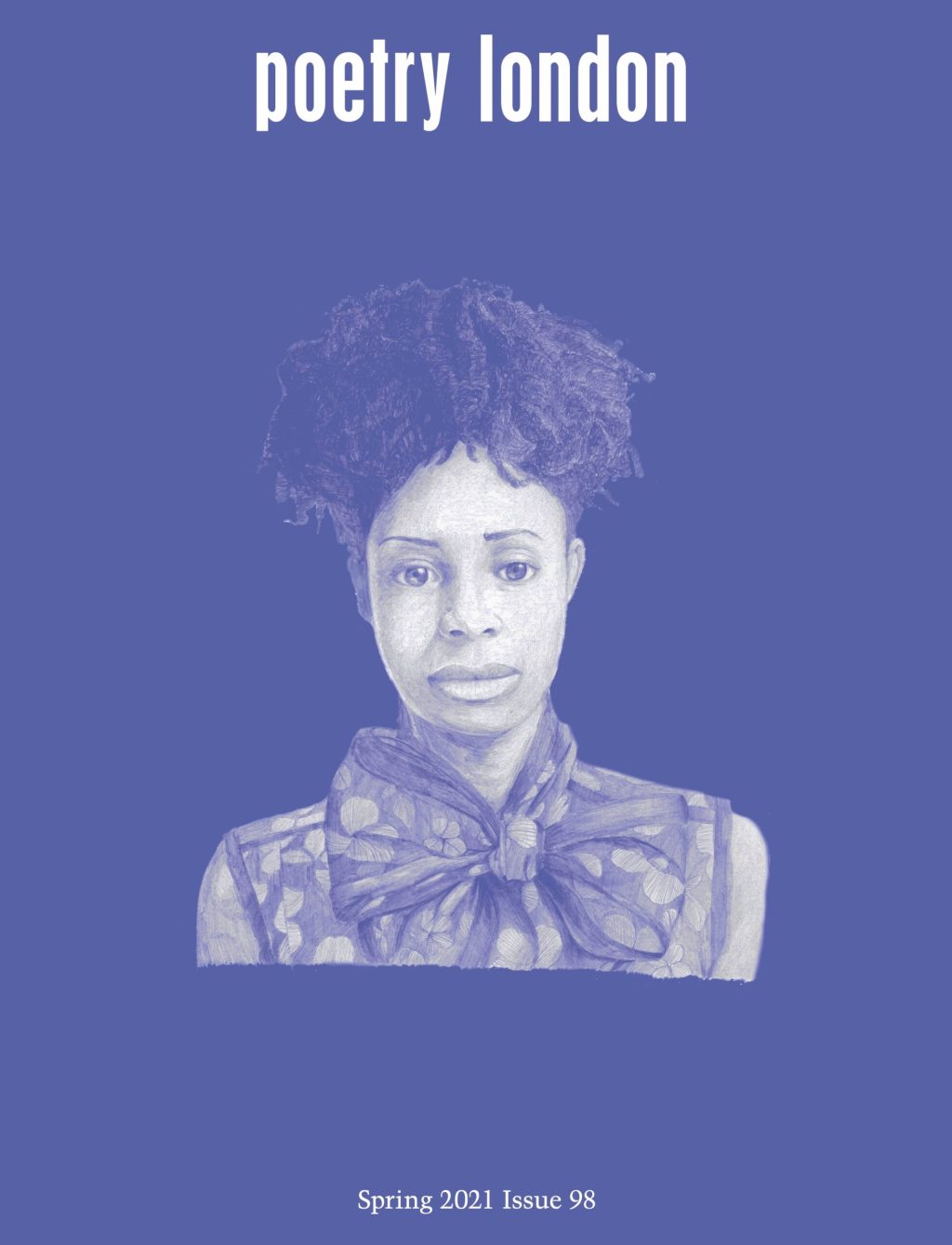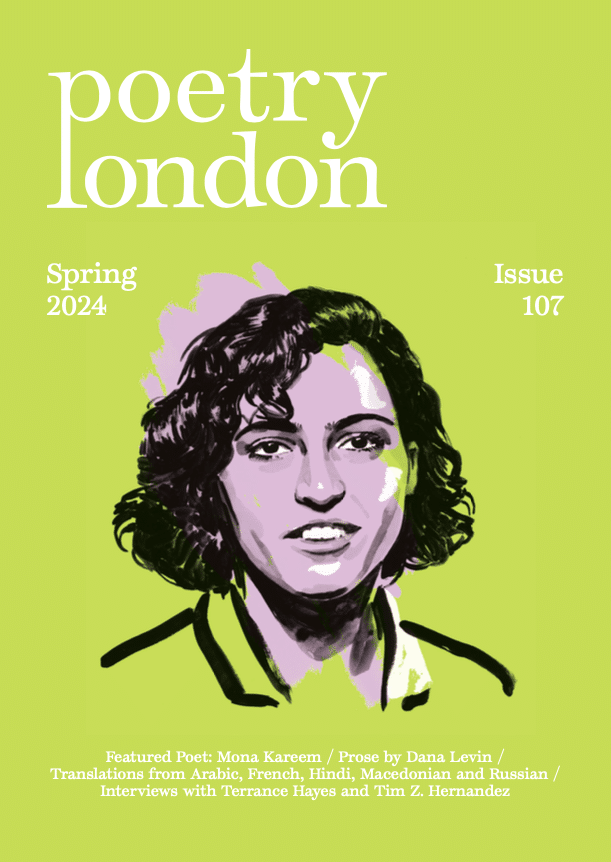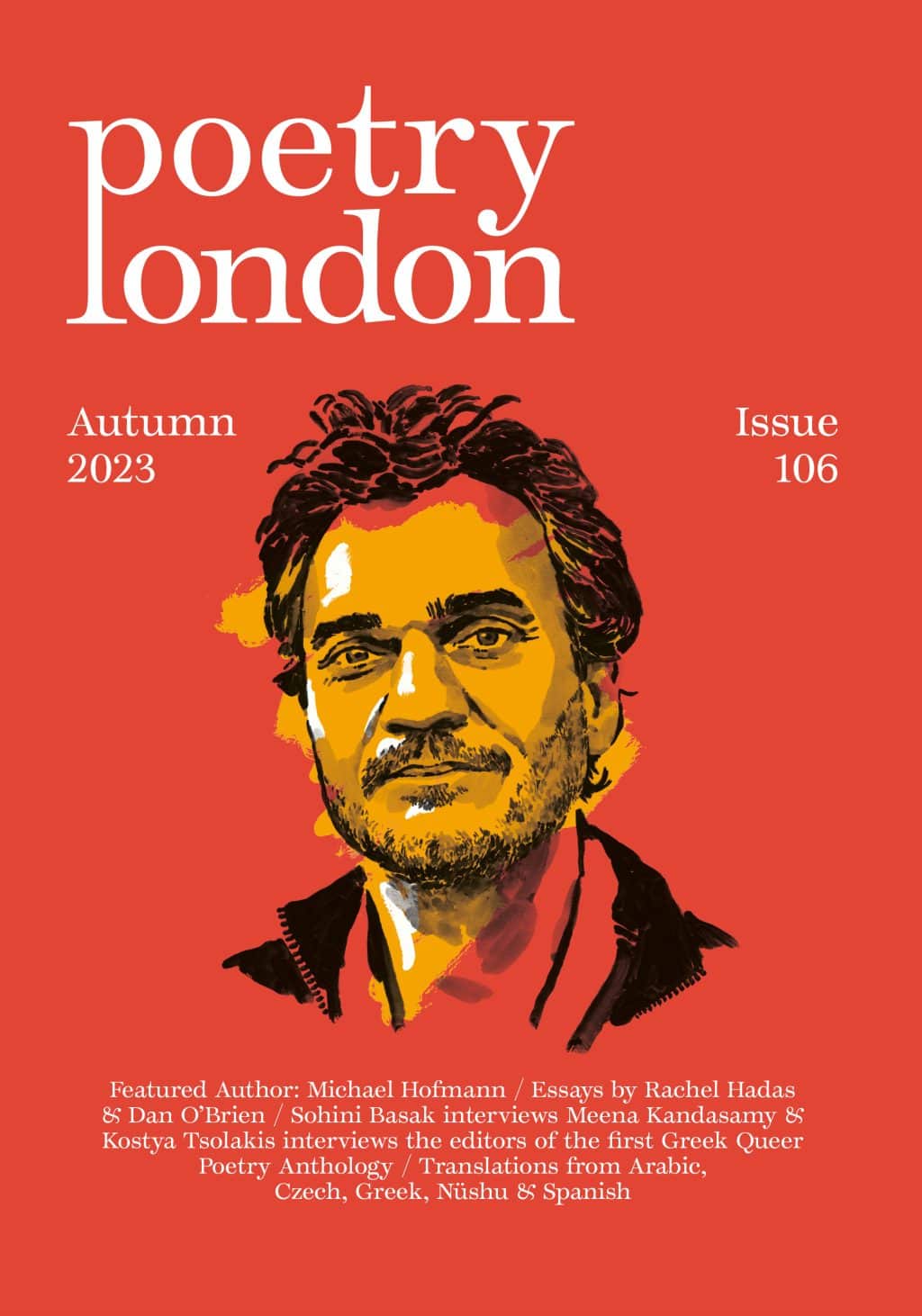Remnants as an Articulation
Jennifer Lee Tsai interviews Bhanu Kapil about the trajectory of her career to date
JLT: I wonder if I could ask you about when and how you started writing? What is the purpose of writing and who do you feel you are writing for?
BK: I wrote as a child because I did not know it was writing! My mother used to wake me up on rare cloudless nights, when the moon was visible above the London Boroughs of Hillingdon and Ealing (the places where my family lived, worked and socialised from 1965, when my father arrived in England, to 1997, when he died and we dispersed). Pre-dawn, she’d prompt me to ‘sing a poem to the stars.’ I think I’ve told the story in other places, but my mother (who is drinking her tea in the next room as I write these words, a lifetime later, in England again) had an arrangement with her own mother, in India, to communicate through the night sky, as if the moon and stars were satellites capable of receiving and transmitting the vibrations and extensions of their messages and love. (This was in the time of blue aerograms filled to the margins with cramped Urdu, careful Hindi or English, and when, in order to afford the flight to Delhi every three summers, my parents went without a fridge, car, washing machine or television, for the first five years of my life!)
Was this writing? My mother wrote my poems down; I was not yet two when this began, and can still recall the white, peeling windowsill of our home on Lansbury Drive in Hayes, Middlesex. I remember writing the alphabet in the condensation of the windowpane with my fingertip. I still, on walks or in nature, like to say poems aloud that will never be written down; the bulk of my writing takes place, or has taken place, in notebooks, or right into a blog as an improvisation of another kind. For many years, on my blog, I felt I was writing for other writers, or near them, alongside. Many readers (from many countries) sent me emails, letters and gifts of their own books, pamphlets or unpublished poems! 1.25 million readers found my blog, a number that far exceeds the readership I will ever have as a poet. Maybe it was the blog that moved me into a new area: the desire to metabolise social, institutional and cultural experiences that had lodged in my tissue. In the present, writing in my notebook again, I notice that there’s a part of me, now that I’m older, that wonders who this writing is for. A descendant? It’s strange to be living once more in a country that does not have a memory of me living in it. The complicated question of who gets to be an ancestor, whose fragments are lodged in an archive, thus becoming a kind of biologically eternal material, comes forward here.
JLT: Your work moves between poetry, prose and performance, often with a focus on the relation between text and image, and challenges conventional categories of form and content. I’m thinking of, for example, Humanimal (2009), which interweaves narrative, documentary and poetic techniques. Could you talk about the expansion and incorporation of performance, improvisation, installation and ritual into your work, and how it relates to your writing and practice as an experimental creative writer?
BK: I don’t think of myself as working in the field of performance or installation, or even ritual. Diasporic form: an attempt to remember something that nothing in your environment prompts. That feels closest to what it was, in the United States, to incubate fragments. To stay close to the earth materials that a book was made of, and which preceded it. I came to the limit of the poem as the place where I could remember my life, and I turned to other practices as a way to touch something I could not contact otherwise. After the fact, I encountered the idea of performance as research, and that felt useful, but at the time, in my garden in Colorado, it was more about being able to feel something. How to unfold a sensorimotor sequence as a gesture, in ways that might be indexed to a line, though not always. Perhaps performance was a way to discharge something that the poems could not tell. I am not sure. It was different each time. Improvisation: a way to deal with the abyss between the stage and the audience. What was in that gap? Ritual became important here, as a way to work with the detritus of performance. What receives the blood? What is the ethical, ecological relationship a writer might develop with the waste materials produced by a multi-disciplinary process? I understood those remnants as an articulation, like the fragments of a charnel ground, of the next incarnation of the work.
JLT: That is beautifully expressed – the metaphor of the charnel ground evokes both suffering and trauma but also possibilities of transformation and becoming, a spiritual process of embodiment. How are you at this present moment and how has life changed for you in the post COVID-19 world?
BK: Present moment: I’m reading the news, something about an actor who wants to found a new political party because… Sainsbury’s… is celebrating Black History Month? Did I read that correctly? My limbic response is immediate: I recall something, without wanting to recall it necessarily, that happened two months before Trump won in 2016. I was teaching a seminar that engaged literatures of exile and diaspora, a course I had been invited to create in response to a student-led protest against on-going instances and patterns of structural and interpersonal racism in the university I was visiting that term. It was the first day. I handed out the reading list, then asked for any questions. The only white, male student in the room raised his hand. Yes? ‘But,’ he began, brandishing the syllabus, ‘I am the minority here.’ My mind froze. He continued: ‘This is racism.’ It was the first time I’d encountered vocal, expressive and what I thought of later as confident anger about the centring of black and brown experience in literary texts. The present moment is about working with delayed and omnipresent little shocks of this kind, when and as they come. It’s about learning how to unfreeze.
JLT: Can you say a bit more about your experiences as a poet and teacher of writing when you lived in the US? You taught at Naropa University’s Jack Kerouac School of Disembodied Poetics and at Goddard College. How did living in the US influence or change your writing and poetics?
BK: In retrospect, perhaps the seminar I mentioned was ill- timed. It was a pop-up seminar, not designed to recur, and thus not a part of the university’s ongoing structure. The student in question did not take it because they wanted to take it; it fulfilled a requirement they needed in order to graduate. Perhaps it would have been more useful to mentor an extracurricular reading or listening group. Developmentally, I was still working out my own interpersonal experience as a minority faculty in a white- dominant collegiate setting. Nevertheless, I learned a lot from the experience, and when I returned to my own university, a non-tenure-granting institution, I asked if I could be moved to another department. Was this the moment that I became a Diversity practitioner? The shift away from poetry was uncomfortable, but I’m still grateful to have met many student organisers, artists and activists working in the context of community health and institutional revenge. Revenge is the wrong word! I remember, at Naropa University, attending talks by Ryūmon Sensei, Lama Rod Owens, Carla Sherrell, Fania Davis, Sayra Pinto, and angel Kyodo williams, for example: practitioners for whom somatic experience was not different to political experience. Ryūmon Sensei, from a talk on healing and justice for faculty, student and staff members of colour: ‘How will you metabolise the transgression that you know has already occurred?’ That was a question I tried to work on with others, when the time came to look at poems. ‘What receives the blood?’ That was a new question for me. And perhaps there was another question that came before that: ‘What kind of feedback do you want to receive?’ Not just to write or think or read about colonial or postcolonial violence, in other words, but to articulate models of absorption, discharge and care. I’m thinking, suddenly, of something Sayra Pinto said when we co-taught a seminar on installation and poetry for the University of Vermont’s master’s program in Leadership for Sustainability (another of the new environments I had suddenly been invited into). We were looking at the poems of Nicanor Parra.
We think we are a country and the truth is we are barely a landscape. – the last lines of Chile, one of Parra’s ‘Emergency Poems’ (in translation by Miller Williams).
In this context, Sayra spoke about ‘artifacts of oppression’ and a reading of shame that is the way colonisation inscribes itself on bodies and mental states. How exposing these artifacts to view is a way to dislodge the effects of colonisation itself: from ‘the tissue’. For me, this is the only way, right now, that I could begin to answer a question about text and body.
In returning to England after so many years, I’m still processing what I learned about being and becoming a human being with other human beings, elsewhere. Here is a memory drawn from one of the creative writing environments you ask about.
The Jack Kerouac School of Disembodied Poetics: I remember eating breakfast with Amiri Baraka. ‘Do you want some zines?’ he asked, as we left the cafe, handing me a plastic bag stuffed full of them. ‘Where are you going with all of this?’ he said, gesturing to poetry, which was in the room whenever he was. Later that afternoon,
Robin Blaser offered me his umbrella in a downpour, saying, ‘I don’t need it, my dear. Isn’t this wonderful?’ He was standing under a catalpa tree next to the ATM outside the motel that housed visiting faculty. That evening, Meena Alexander read an elegy for Allen Ginsberg beneath the sycamore tree he once sat beneath to lecture on William Blake.
JLT: There’s so much here to reflect on deeply. Following on, I wonder how you see your work in relation to the avant-garde. I read your fascinating statement of poetics in Atlantic Drift: An Anthology of Poetry and Poetics (2017), edited by James Byrne and Robert Sheppard, which includes passages from Ban-en-Banlieue (Nightboat, 2016). Ban is an experimental, complex book, described as an ‘auto-sacrifice’, ‘a literature that is not made from literature’. I was struck by your reference to wanting ‘a sentence that shakes. A sentence that takes up the cadence of the nervous system as it discharges a fact. To map this sentence, in other words, to the gesture-posture events’. At the end of the poetics section you write, ‘The problem with my accompanying statement[…] is that everyone I am looking to, to derive a framing argument, is white. Part of this is my desire to keep certain conversations, alliances and loves: in turn: unseen. Part of this is extreme habit. I need to retrain’. Could you speak to any of this?
BK: Perhaps what I can say here, that might be different to what I’ve said in other venues and at other times, is that I am still interested in the fleetingness of disgust: how swiftly we register it when it’s directed towards us. Disgust: the hardest emotion not to feel, and thus to conceal, once felt. The curve of the lip. A flinch. What’s the visceral experience of ethnic density, the whiteness of avant-garde spaces? And with the proviso that, as Dorothy Wang said, at a conference on race and creative writing in Montana: ‘Sometimes it’s the ones who most resemble you who can hurt you the most.’ The sentence became the place where I was able to record, through syntax, instants of contraction and recursion. What is the shape of your body as it moves through the world? Is there a way to think about narrative as a mode of sensing and orienting, a counterpoint to… unobstructed forward motion? I became interested in how, at the level of the poem’s texture, I might work out some of these things: phatic and interoceptive realities, both.
JLT: Yes – what you describe here encapsulates the complex realities that poets of colour are often confronted with negotiating. Your latest book, How To Wash A Heart (2020), comes to mind in its depiction of the relationship between a citizen host and immigrant guest as well as the reference in Schizophrene (2011) to ‘a flux where the body always is’. In terms of writing influences, which poets have inspired you most? How important is a sense of poetry community to you?
BK: Eunsong Kim’s gospel of regicide, and Lucas de Lima’s Wet Land are the only two books I brought with me to England, and I’ve already lent them to others. Will these books return? Or will they cause micro-mutations in the imaginations of anyone who comes across them? Eunsong is the co-translator, with Sung Gi Kim, of Kim Eon Hee’s Have You Been Feeling Blue These Days? (Noemi Press, 2019).
Melissa Buzzeo, whom I met in New York in 2001, has been an important poet for me, in her attention to trauma and healing. This is an excerpt from a talk she gave at the Vital Forms symposium in the Bay Area, curated by Eleni Stecopoulos, which we were both a part of:
Why people who are sick are also looked at as waste products in society. Why people, especially women, especially sick women, do not want to draw too much attention to themselves. Healing is personal rather than universal. It is painfully intimate, often without the erotic overtones that sometime save writing. What does it mean to talk about yourself.
Reading those words again, I’m struck by the syntax, the absence of question marks, a way of denoting perhaps that the vital forms of crisis are topographies of unremitting dissent, but also presence.
Here in Cambridge, I’m building community very slowly with the poets I meet in person. Mina Gorji, Sasha Dugdale, Vahni Capildeo and Sandeep Parmar are four poets, for example, whose books I can see from where I am sitting now, and with whom I’ve drunk at least one cup of tea. I was going to meet Daljit Nagra in a Costa Coffee opposite Kingsbury Station, but it didn’t happen, so that’s still ahead of me. Next week, I’m reading with poets and novelists connected to The 87 Press, and that feels right.
JLT: In the midst of a second national lockdown, what are some of your hopes for the future and what is next on the horizon for you?
BK: My hopes: for an end to the ongoing destruction of vulnerable populations and individuals. For an end to children put in cages at the US border. For an end to the hostile environment policy in this country, which has caused so much agony and loss. What is next: trying to write something for which these hopes are both a motivation and a purpose.
Jennifer Lee Tsai is a poet, editor and critic. She was awarded a 2019 AHRC scholarship to undertake doctoral research in Creative Writing at the University of Liverpool and won a Northern Writers’ Award for Poetry 2020.
Bhanu Kapil is an artist by-fellow at Churchill College. She is the author of six full-length collections of poetry/prose. Her latest collection is How To Wash A Heart (Pavilion Poetry, Liverpool University Press, 2020).


